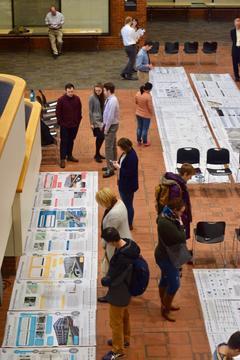Originally published in the Belle Plaine Herald, January 25, 2019
Master of Urban and Regional Planning (MURP) students at the University of Minnesota worked with Scott County on a Resilient Communities Project this past fall, according to the Center For Transportation Studies. This project highlighted the role of government in facilitating the relationship between land use and transportation. Highlighted in the project was the future use of CAV's (Connected Automated Vehicles) and how they will soon play an increasingly more prevalent role in Scott County.
The event, co-sponsored by the Center for Transportation Studies, the College of Design, the Humphrey School of Public Affairs, and the Resilient Communities Project showcased the work of master of urban and regional planning (MURP) students at the Humphrey School. Students worked with RCP’s partner community, Scott County, through a fall-semester course match facilitated by RCP.
Student groups analyzed four scenarios for CAVs in Scott County, examining the feasibility and potential for integrating CAV-friendly infrastructure into regionally known sites such as Canterbury Commons and the Minnesota Renaissance Festival, both of which draw large crowds and create a demand for more efficient transportation networks. Additional scenarios students studied included applying AV planning concepts to the MN State Highway 13 corridor for use with road freight vehicles, and the County Highway 16 corridor for school pedestrian crossings.
The uncertainty of the future is not lost on Scott County traffic and mobility staff, who are eager to apply students’ ideas in future planning. “As a mobility manager, we need to understand the implications of this type of service on current transit service but also prepare for policy and regulatory impacts,” noted Scott County’s Smart Link Transit Supervisor Alan Hermann, who worked closely with students throughout the semester. Mark Callahan, Scott County traffic engineer, added that the students’ posters will be displayed at meetings with county and city staff, local policymakers, and developers to “enlighten them and to discuss a vision of the future where CAVs play an increasingly more prevalent role.”
